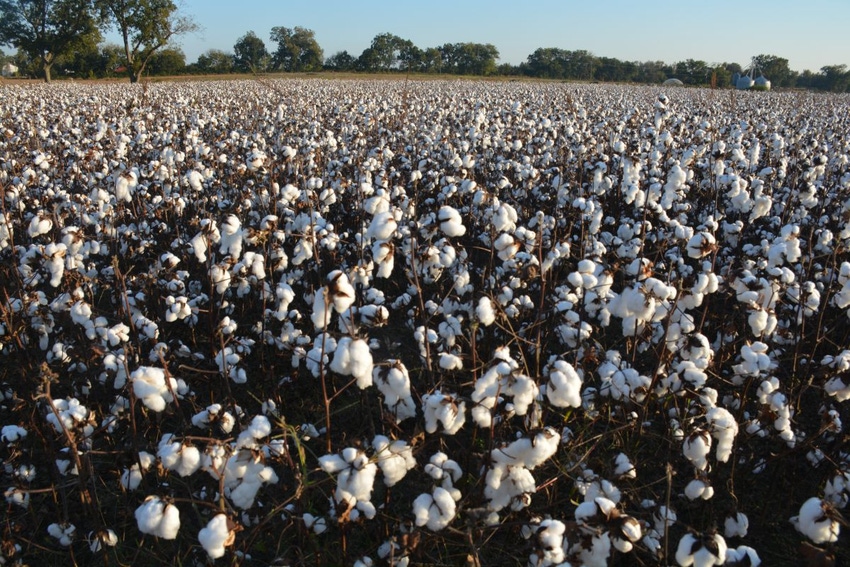
(Correction) Bayer may divest assets in Monsanto merger
Note from editor: This is the corrected version of a story published on Southeast Farm Press website Jan. 24 and in the SEFP Feb. 8 print issue under the headline “Bayer will divest of Stoneville assets in Monsanto merger,” which was an incorrect headline.

Note from editor: This is the corrected version of a story published on Southeast Farm Press website Jan. 24 and in the SEFP Feb. 8 print issue under the headline “Bayer will divest of Stoneville assets in Monsanto merger,” which was an incorrect headline.
Bayer CropScience has been very clear that they are prepared to divest of some assets in order to close the merger deal with Monsanto, a Monsanto official said at the Southern Cotton Growers and Southeastern Cotton Ginners meeting in Charlotte.
Referencing a historic deal for Monsanto, Michael J. Frank, senior vice president and chief commercial officer for Monsanto in St. Louis, noted that the DOJ required Monsanto to divest of the Stoneville seed business when it owned the Stoneville brand and bought Delta and Pineland in 2007.
“Not only did they tell us to divest of it, but they told us we had to sell it to a high quality buyer. It’s DOJ’s job to make sure there is as much competition in the future and that the innovation engines even get stronger. I think the proof is in the pudding,” Frank said. “Since we acquired Delta and Pineland and since we divested of our Stoneville business, at the farm gate the products have never been better than before and the competition has never been higher.”
At the meeting of cotton ginners and cotton farmers, Frank said the combination of Monsanto and Bayer is the right thing agriculture and ultimately society. He said the merger is necessary for further innovation.
“Agriculture is changing and that is why you are seeing consolidation across the entire industry,” he said.
“Ultimately I think this consolidation is going to make your suppliers stronger. It’s going to make them more efficient, it’s going to make the supply chain more efficient. And it will make the industry more competitive…And that’s a good thing,” he said.
Frank explained that new disruptive technologies are coming to the marketplace which are disruptive to traditional companies that operate in agriculture. This will ultimately create benefits for farmers.
“At the forefront of this is breeding technologies and gene editing technology along with all the innovation that is coming in the precision ag space and data science,” he noted.
Frank believes the merger will strengthen the supply chain for farmers.
“The last thing I think farmers want is weak suppliers. You want suppliers that are capable, you want suppliers that are taking a five, 10 and 20 year look into the future and making those bets and making those investments to help you and future generations on the farm be successful. That’s why we see a wave of consolidation going on,” he said.
Frank acknowledged that the proposed Bayer-Monsanto merger has created anxiety and concern, but he emphasized that the DOJ and Federal Trade Commission are going to ensure competition “stays really strong.”
“As we think about combining Monsanto and Bayer, this is all about bringing together innovations in our pipelines and our products that deliver solutions to farmers faster and better than ever before,” he said. “We made the commitment in the next six years once we combine these companies, we will invest 16 billion in R and D in agriculture .Over half of that is going to be invested in the U.S.”
He said the merger will create an environment that will raise the level of technology, innovation and drives competition even more. “R and D will actually accelerate,” he said
He explained that the companies are structured today as primarily chemistry companies or seed companies. The merger of Bayer and Monsanto will shorten the time of new products coming on the market, Frank believes.
“A company like Bayer will work on discovery for weed control. They will make a discovery and it takes 10 or 12 years from discovery to commercialization to bring a new active ingredient to the marketplace,” he explained.
“Once that active ingredient is in the marketplace, a company like Monsanto will say in order to create solutions for farmers, we need to create a biotech trait and put that into some of our seed varieties. That will take another 10 or 12 years to develop that biotech trait and get it through regulatory approval process and finally get it to marketplace.”
The entire process can take anywhere from 20 to 25 years. “In your 50 year career as a farmer, you could get one or two products that can be put together that can be that solution. When we come together, we start doing innovation and discovery in parallel. With the discovery of active ingredients, we can start screening for biotech traits that will allow us to create weed control systems that can be a solution. Instead of taking 25 years, we think we can cut that in half because we make the R and D system run in parallel.”
Frank said the innovation can be accelerated so that farmers can gain five different solutions coming from the combined company in their 50 year career and lifetime as farmers.
About the Author(s)
You May Also Like





